IoT Product Roundup: Siemens, Renesas, Weidmuller and More
The latest products from the world of IoT
.jpg?width=1280&auto=webp&quality=95&format=jpg&disable=upscale)
From Siemens-owned company Enlighted’s new AI capabilities for asset-tracking to Weidmuller USA’s new immersive training platform and Renesas’ high-performance microcontrollers, here are some of the latest products from the world of IoT.
Siemens-Owned Enlighted Adds AI Capabilities for IoT in Buildings
Enlighted, a property-tech company owned by Siemens has announced the expanded use of AI in its Location Services solution to enable asset-tracking in buildings.
Enlighted’s Location Services track the location and movement of assets and badges in buildings, using existing Enlighted intelligent lighting infrastructures and allowing businesses to optimize operations and better control inventory.
The expanded system builds on the existing Enlighted Touchless Workplace solution, an AI-driven mobile app thatallows occupants to control workplace temperature. Both the location services and Touchless Workplace are part of the Siemens Xcelerator Marketplace, an open digital business platform to accelerate digital transformation.
“Sensors in smart buildings collect an enormous amount of data,” said Stefan Schwab, Enlighted’s CEO. “AI-based applications are a transformative way for commercial buildings to maximize and use this data, optimizing efficiency while improving the occupant experience.”
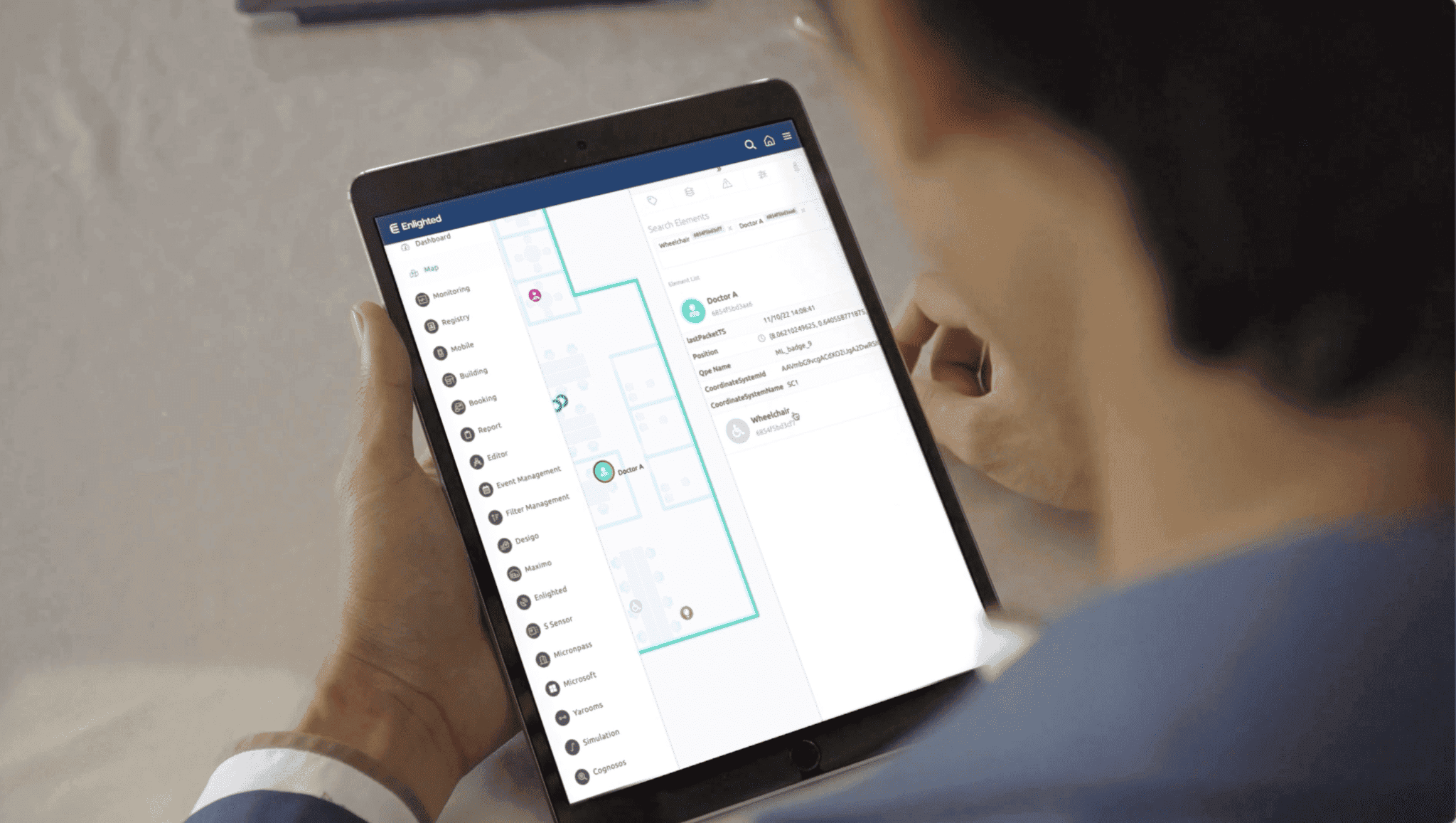
Credit: Enlighted
Weidmuller USA’s New Distributor Connect Training Program
Weidmuller USA has announced a new distributor training experience – Distributor Connect.
This program is designed to provide training for Weidmuller USA’s partner distributors, enabling an “unprecedented level of immersion” into the company’s pipeline of smart industrial connectivity products.
“The distributors meet and interact in-depth with our product managers and skilled trainers who present all the products and solutions their customers need,” said Caroline March-Long, Weidmuller USA’s director of marketing. “Attendees participate in hands-on demonstrations of our automation and connectivity products.”

Credit: Weidmuller USA
Renesas’ Releases New High-Performance Microcontrollers
Renesas has released what it says are the “world’s most powerful microcontrollers” (MCUs).
The new RA8 Series MCUs are the industry’s first to implement the Arm Cortex-M85 processor, enabling the new devices to deliver high performance that can be used in applications that previously required microprocessors.
The new RA8 Series MCUs also enable edge and endpoint devices to implement natural language processing in voice AI and predictive maintenance applications.
“The advent of AI is increasing demand for intelligence at the edge and endpoints to serve new applications across diverse markets including industrial automation, smart home and medical,” said Paul Williamson, Arm’s general manager of IoT.
“Renesas’ new MCUs, built on Arm’s highest-performing and most secure Cortex-M processor to date, are specifically optimized for signal processing and ML workloads, and will be game-changing for innovators looking to address the growing AI opportunities in the embedded and IoT space, without compromising on security.”
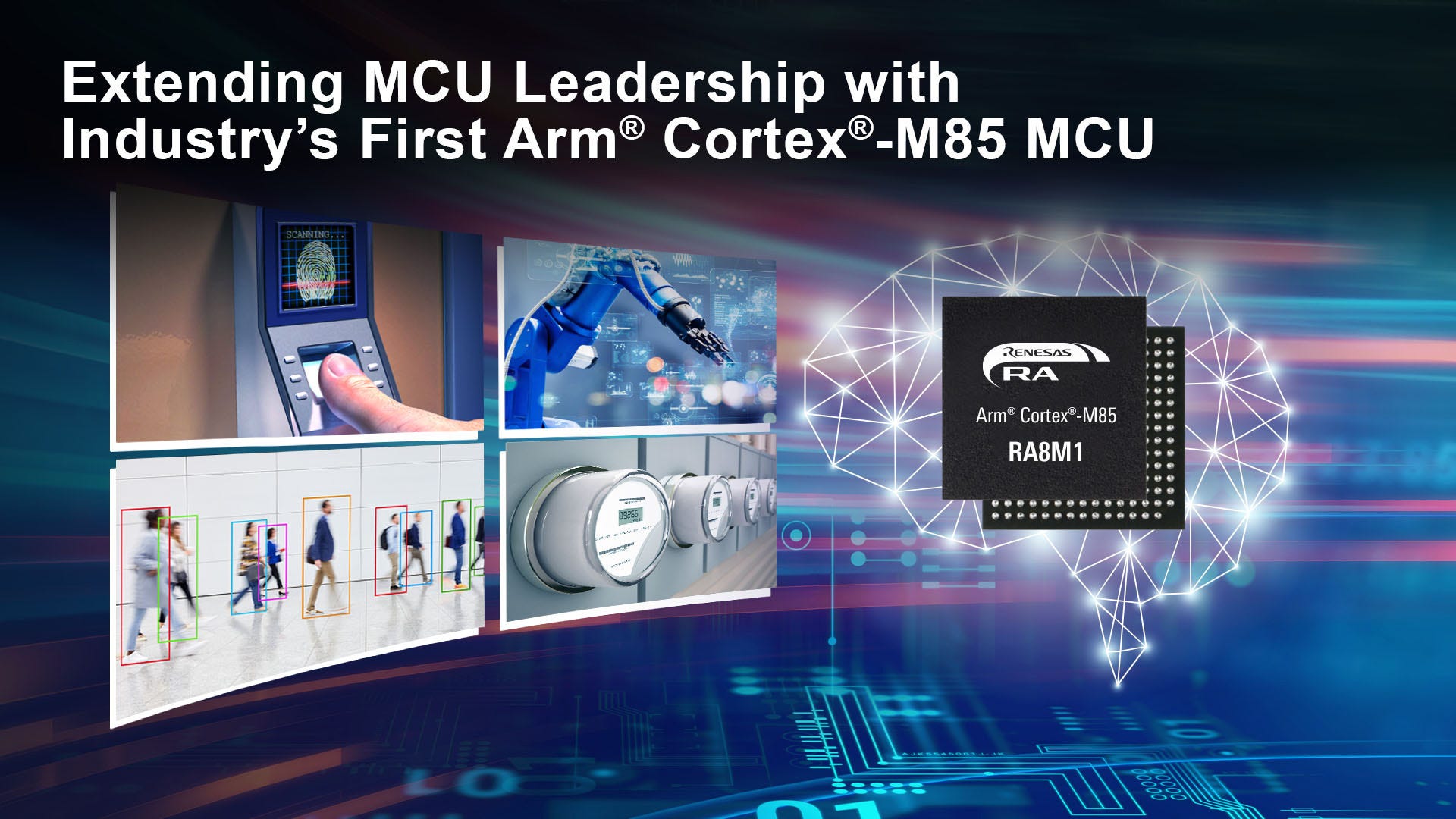
Credit: Renesas
PassiveLogic Releases Hardware/Software Suite for Autonomous Buildings
PassiveLogic has introduced a full suite of hardware and software tools to enable smart, autonomous buildings, allowing users to create their own digital twins using generative AI and pursue sustainable, smart building designs.
“Today, buildings and industrial systems are the world’s largest decarbonization opportunity,” said Troy Harvey, PassiveLogic’s CEO. “They … account for the largest proportion of wasted energy due to inefficient control.
“Buildings are also the world’s largest robotics challenge, with the biggest ones trending toward one million sensors and controllables. PassiveLogic has built the technology to make buildings autonomous, enabling buildings to be 30% more energy efficient through system controls optimization alone.”
The suite is currently available to select partners and will become open to the public in December.
Using the platform’s generative AI capabilities, customers can design and implement their own digital twins, while the Quantum Standard technology allows objects within the digital twins to have “self-knowledge.” That is, objects within the digital twin understand how they should function and their role in the system as a whole, enabling autonomous, predictive control.
“These products both democratize autonomous systems for everyone and advance energy efficiency, climate impact and ESG,” said Harvey. “Our work to bring generative autonomy to the market expands AI beyond its current narrow scope and mainstreams it into the built and industrial world to not only solve current market problems, but unlock autonomy for everyone, building a more inclusive, resilient, and sustainable future.”
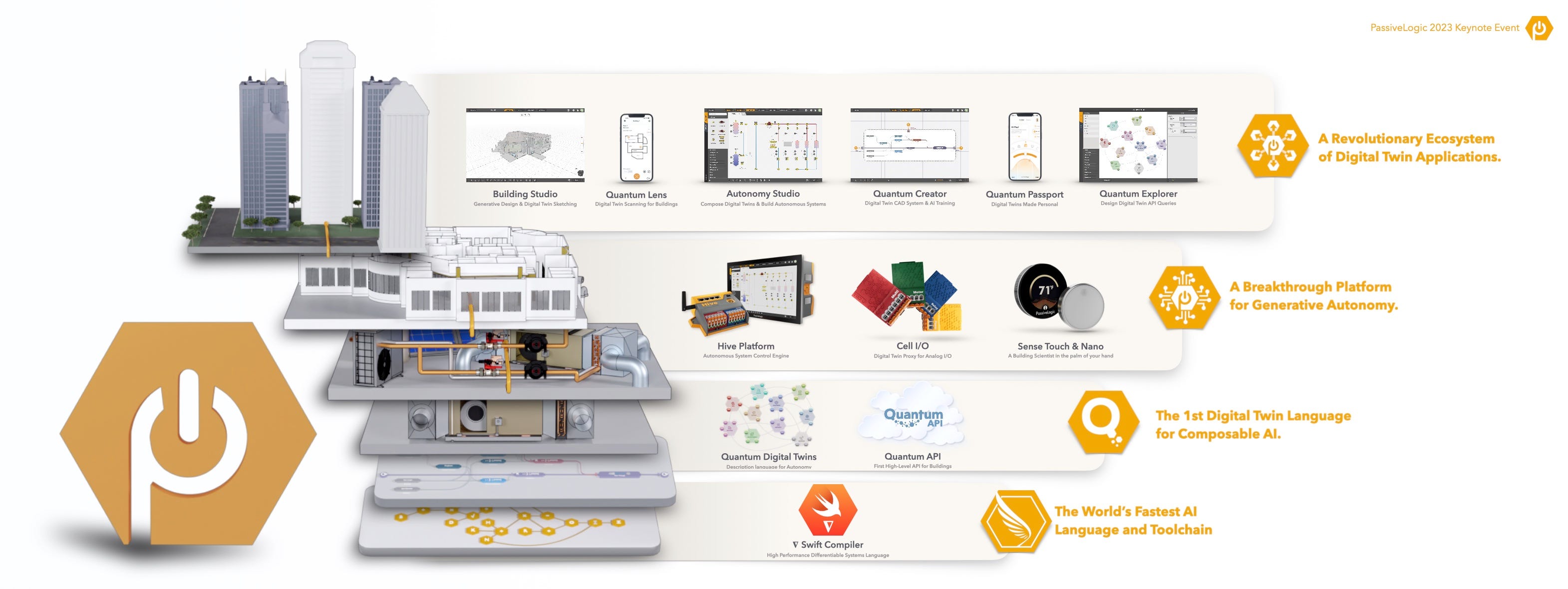
Credit: PassiveLogic
Cloneable Emerges From Stealth With Platform to Create Intelligent Field Devices
Cloneable, a no-code platform designed for building and deploying intelligent applications on edge devices, has emerged from stealth.
The team expands on experience in the commercial drone industry, aiming to transform devices in the field into smart, connected tools. Using Cloneable’s platform, companies can run AI, machine learning, computer vision and other technologies on devices to process data and enable real-time decision-making.
Cloneable secured $750,000 in pre-seed funding from First In and is working on potential applications ranging from infrastructure inspection to crop modeling.
"Machines generally lack context in data collection,” said Patrick Lohman, Cloneable’s CEO. “Cloneable changes that. By making it easy to unite deep tech with a company’s specific logic, field devices can make contextual decisions without the delays and congestion of data transfers and post-processing.”

Credit: Cloneable
Northrop Grumman Releases Smart Sensor to Protect Aircraft From Heat-Seeking Missiles
Northrop Grumman has developed a new warning sensor system, dubbed the Advanced Tactical Hostile Engagement Awareness (ATHENA), which is designed to defend aircraft against heat-seeking missiles.
“The longer range and resolution of ATHENA will give warfighters an additional margin of safety in contested airspace,” said Dennis Neel, program director, Northrop Grumman.
The ATHENA sensor comes with onboard processing that provides real-time actionable information, as well as full “spherical” situational awareness which uses feeds from multiple sensors to enable a 360-degree view of an aircraft’s surroundings.
“ATHENA exemplifies our approach to sensors, using available hardware to perform multiple functions and missions,” said Neel. “This increases rotary wing aircraft survivability and provides situational awareness capabilities previously available only on much larger aircraft.
“It has the potential to make any aircraft significantly more survivable. Bringing warfighters home safely is the ultimate goal.”
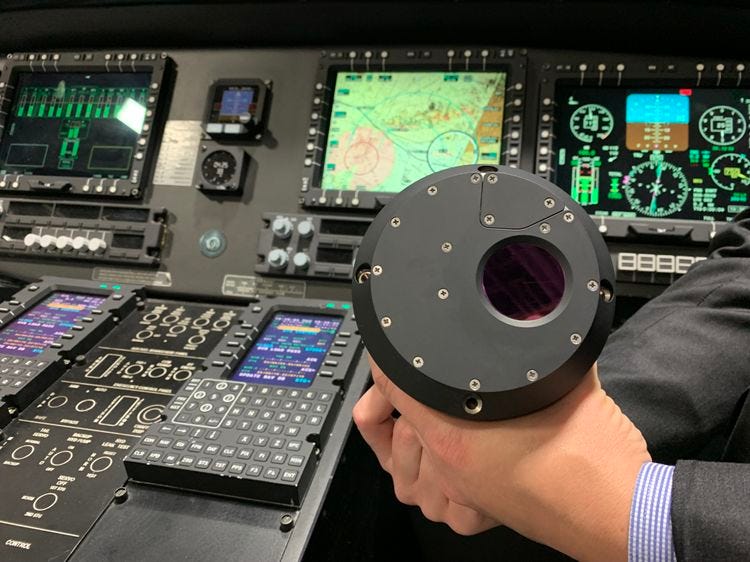
Credit: Northrop Grumman
Quectel Expands IoT Antenna Portfolio With New 4G and 5G Antennas
Quectel has released six new 4G and 5G antennas to boost connectivity performance for IoT devices.
“We’re proud to launch these new antennas which further add to our range of 4G/5G, LPWA and GNSS antennas,” said Norbert Muhrer, president and CSO of Quectel Wireless Solutions.
“Antennas are often overlooked during device development but it’s important to enable developers with antennas that can be optimized for their specific use cases and provide them with the performance they need to meet their application needs. These new antennas provide customers with even greater opportunities to optimize their solutions as they build a smarter world.”
The new antennas also have Quectel’s design support system, including simulation, testing and manufacturing for custom antenna solutions to meet customers’ specific application needs.
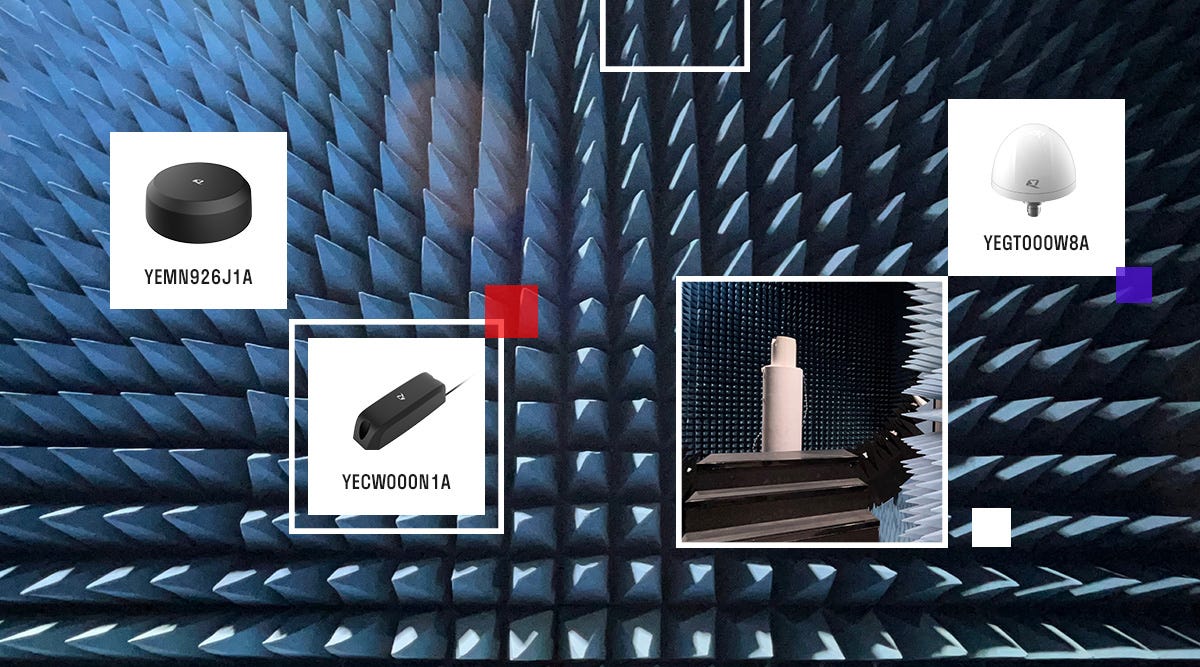
Credit: Quectel
AutoStore Launches New R5 Pro Robot
AutoStore has unveiled the latest iteration of its R5 robot, the R5 Pro, designed for large-scale e-commerce applications.
“The R5 Pro offers an edge by augmenting productivity per Robot during extended operations, optimizing space usage, and reducing the total cost of ownership,” said Carlos Fernandez, AutoStore’s CPO. “Ultimately enhancing the customer experience while boosting profitability.”
The robot is designed to optimize warehouse operations, automating order fulfillment processes at logistics and manufacturing sites.
Compared to earlier models, the R5 Pro has faster charging times and allows for continuous operation, also allowing a warehouse to integrate fewer chargers and thereby optimize space usage and enable cost savings.
“The introduction of the R5 Pro improves both our market position and the value proposition for customers managing very large systems and high-throughput operations, typically characterized by extended operating hours and a substantial robot count,” said Fernandez.
“Being able to reduce charging time during multi-shift operations offers great potential for improved productivity,” said AutoStore customer Tobias Sjölin, CTO of fulfillment and logistics at Boozt. “The projected higher productivity per robot means we would need significantly fewer robots and chargers to achieve our required throughput … All these incremental savings add up over time and allow us to remain competitive.”

AutoStore
Hippo Harvest Deploys Zebra Robots for Indoor Farming
Californian agtech startup Hippo Harvest has integrated autonomous mobile robots (AMRs) from Zebra Technologies, a supply chain technology solution provider, into its indoor farming operations.
The AMRs, dubbed Fetch, are being rolled out to “grow greens,” automating the process of watering the plants to help drive water savings and boost sustainability. According to Zebra, so far its AMRs have helped Hippo Harvest save up to 92% of water and use 55% less fertilizer than conventional produce growers, with the robots delivering precise levels of water and nutrients as and when it’s needed.
Zebra’s Fetch AMRs can also undertake picking and moving tasks, freeing up human workers for “more strategic” tasks.
“We found exactly what we needed with Zebra’s AMRs to develop growing methods that address some of the biggest challenges facing our food supply and the agriculture sector,” said Eitan Marder-Eppstein, Hippo Harvest’s CEO. “We’re excited to continue collaborating with Zebra Technologies as we work to develop transformative growing processes that are sustainable and make the best use of our natural resources.”
.png?width=NaN&auto=webp&quality=80&disable=upscale)
Credit: Zebra Robotics
About the Author
You May Also Like








